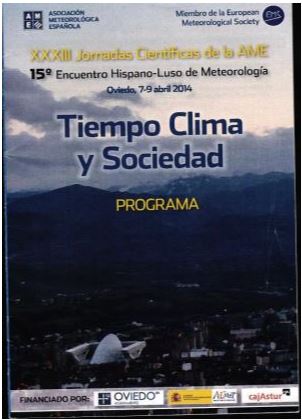EFFECTS OF CLIMATIC VARIABILITY IN MODEL VALIDATION OVER THE IBERIAN PENINSULA
Resumen
The rapid expansion of wind energy and its increasing importance in power production have necessitated improved methods for forecasting wind speeds. The short-range Ensemble Prediction Systems (EPS) could potentially play a major role in short term prediction as in addition for providing wind speeds. EPS can also provide probabilistic information and indications on the uncertainty and reliability of the forecast.This study presents results of 10m wind speed over the Iberian Peninsula obtained from a multi-physic EPS. The EPS is based on the Weather Research and Forecasting (WRF) model version 3.3 using the Advanced Research WRF (ARW) dynamical solver. The EPS have 10 members, which are composed of two different sets of initial and boundary conditions, and 5 different sets of subgrid scale physics parameterizations. The initial conditions and boundary conditions are provided by NCEP (Global Forecast System) and ECMWF (Integrated Forecast System), with boundary conditions coming from the forecasts every 3 hours. The GFS system has a horizontal resolution of 1.0° x 1.0°, with 26 isobaric levels; the ECMWF system has a horizontal resolution of 0.5° x 0.5° and 21 isobaric levels. The multi-physics approach was chosen as it is an effective way of representing model uncertainty, which has been shown to highly important in short range ensembles, in particular for variables which are strongly influenced by the land surface.
Several deterministic and probabilistic results are shown. Results of bias, spatial correlations and root mean squared errors are displayed, evaluating the model skillful for predicting 10m wind speed over the Iberian Peninsula. The probabilistic results are shown by means of rank histograms and reliability diagrams. The results show the model skilful in forecasting wind speed in different areas of Iberia, emphasizing how diverse peninsular climatic conditions promote high variability in validation skill scores. This fact must be considered when a
model is validated over areas with high climatic diversity such as the Iberian Peninsula.
Descargas
Publicado
2020-03-16
Número
Sección
Análisis y Predicción del tiempo

